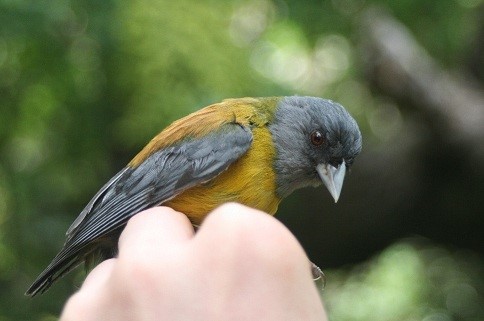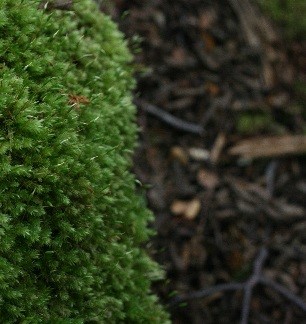Matthew Chmielewski
Doctoral student at Portland State University
I came to Navarino Island with the support of a Fulbright grant to conduct field research as part of my doctoral dissertation at Portland State University in Portland Oregon. My dissertation is focused on using bryophytes (mosses, hornworts, and liverworts) to understand how the process of dispersal influences the formation and maintenance of ecological communities. In particular, I have been working to describe the relationship between bird behavior and the dispersal of mosses, a topic about which almost nothing is known. I decided to work with Omora Ethnobotanical Park due to the high diversity of bryophyte species found on the island as well as the already established mist netting program.

I have focused on the topic of dispersal for my dissertation because it is one of the fundamental processes (along with species interactions and environmental factors) in structuring the patterns of species distributions and community assemblages we observe in nature. The extent to which dispersal influences communities, and connections between communities (metacommunities), has historically been a popular topic of study in vertebrates and vascular plants. By choosing to work with bryophytes, I have elected to work with a group in which the role of dispersal and potential dispersal limitation is still fairly opaque. While this presents challenges, with those challenges come opportunities to both learn something basic about this group of organisms as well as provide a system in which patterns and theories developed in vascular plants can be independently compared and assessed.

My research on Navarino consisted of capturing birds, taking data about the individuals captured, and sampling them for bryophyte spores and fragments. Birds were captured using standard mist netting techniques in the interface forest/field mixed habitat in Omora Park, as well as in older stands of intact forest. Once in hand, birds were assessed for various morphological features and were aged and sexed when possible. Finally, swabs of bird feathers and legs, as well as feather samples were taken from each bird for future laboratory work to determine the abundance and diversity of bryophytes being carried on these bird surfaces.
The processing of these samples will be ongoing on my return to Portland, but I hope to elucidate species-specific relationships between birds and bryophytes on the island. The differences between sites will also be assessed, providing an insight into how land use history influences bird-bryophytes interactions. In addition, I will compare behavioral groups between Navarino and other sites I have conducted similar work in, in order to
 establish larger scale ecological relationship between avian functional groups and
bryophyte dispersal. Ultimately, this work will help us better understand how populations
of bryophytes are connected on local and regional scales. This has implications for
management and conservation strategies, as well as a system with which ecologists
can separately test theoretical frameworks of dispersal based on vascular plant experiments.
Ultimately this early work in avian-bryophyte dispersal interactions will open up
the opportunity to ask specific questions for years to come.
establish larger scale ecological relationship between avian functional groups and
bryophyte dispersal. Ultimately, this work will help us better understand how populations
of bryophytes are connected on local and regional scales. This has implications for
management and conservation strategies, as well as a system with which ecologists
can separately test theoretical frameworks of dispersal based on vascular plant experiments.
Ultimately this early work in avian-bryophyte dispersal interactions will open up
the opportunity to ask specific questions for years to come.